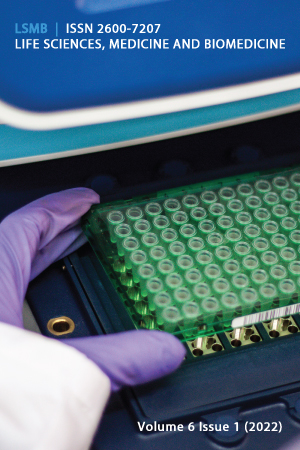Abstract
In Burundi, malaria is the leading cause of morbidity and mortality, especially in children under five. This results in high clinical burden of the disease; however, its economic burden remains unknown. The aim of this study was to estimate the economic burden associated with malaria in Burundi and explore the factors that can affect the costs. This study was a prospective incidence-based cost-of-illness study analysed from the societal perspective. The study included children aged under five years with malaria infection, who visited and received treatment at any of the two study health facilities in the period of November to December 2019. Data collection was done by reviewing medical and financial records and by interviewing caregivers of the patients. Micro-costing approach was used to estimate the economic costs of malaria per episode. The cost was presented in international dollars (Int$) for the year 2019. Stepwise multiple linear regression method was applied to examine the factors affecting the costs and to generate a cost model. Eighty-five children with the average age of 29 months were included in the study. Most of them (70.5%) were treated as in-patient. The out-patient visits costed Int$23.5, while the in-patient hospitalization costed Int$218.2. The types of medical services, health facilities, antimalarials used, and duration of fever before seeking appropriate medical care were found to affect the costs. The model indicates that up to Int$18.76 can be saved per malaria episode if treated early (in less than 2 days). This can save up to Int$24,257,748 per year at national level. This study demonstrated that malaria is associated with a considerable economic burden in Burundi. It will support decision makers in deciding an appropriate clinical management for malaria prevention like the community case management program.
References
Belsley, D.A., Kuh, E. and Welsch, R.E. (1980). Regression Diagnostics; Identifying Influence Data and Source of Collinearity. Wiley, New York.
https://doi.org/10.1002/0471725153
The Demographic and Health survey Program (DHS). (2017). Burundi DHS, 2016–2017-final report (French). Retrieved from https://dhsprogram.com/publications/publication-fr335-dhs-final-reports.cfm
Drummond MF, S. M., Torrance GW, O'Brien BJ, Stoddart GL. (2005). Methods for the economic evaluation of health care programmes. Oxford: Oxford University Press.
El-Houderi, A., Constantin, J., Castelnuovo, E., & Sauboin, C. (2019). Economic and Resource Use Associated With Management of Malaria in Children Aged <5 Years in Sub-Saharan Africa: A Systematic Literature Review. MDM policy & practice, 4(2), 2381468319893986.
https://doi.org/10.1177/2381468319893986
Gallup, J., & Sachs, J. (2001). The economic burden of malaria, The American Journal of Tropical Medicine and Hygiene Am J Trop Med Hyg, 64(1_suppl), 85-96.
https://doi.org/10.4269/ajtmh.2001.64.85
Lwanga, Stephen Kaggwa, Lemeshow, Stanley & World Health Organization. (1991). Sample size determination in health studies: a practical manual. World Health Organization.
https://apps.who.int/iris/handle/10665/40062
Mark Nonkes. (November 2017). 8 facts about Burundi's malaria epidemic. Retrieved from https://www.wvi.org/article/8-facts-about-burundis-malaria-epidemic
Moise, I. K. (2018). Causes of Morbidity and Mortality among Neonates and Children in Post-Conflict Burundi: A Cross-Sectional Retrospective Study. Children (Basel), 5.
https://doi.org/10.3390/children5090125
Moise, I. K., Roy, S. S., Nkengurutse, D., & Ndikubagenzi, J. (2016). Seasonal and geographic variation of pediatric malaria in Burundi: 2011 to 2012. International journal of environmental research and public health, 13, 425-439.
https://doi.org/10.3390/ijerph13040425
Management Sciences for Health (MSH). (2015). International Medical Products Price Guide. Retrieved from https://www.msh.org/resources/international-medical-products-price-guide
Onwujekwe, O., Uguru, N., Etiaba, E., Chikezie, I., Uzochukwu, B., & Adjagba, A. (2013). The economic burden of malaria on households and the health system in Enugu State southeast Nigeria. PLoS One, 8(11), e78362.
https://doi.org/10.1371/journal.pone.0078362
Lok, P and Dijk, S. (2019). Malaria outbreak in Burundi reaches epidemic levels with 5.7 million infected this year. BMJ, 366, 15104.
https://doi.org/10.1136/bmj.l5104
Protopopoff, N., Van Bortel, W., Marcotty, T., Van Herp, M., Maes, P., Baza, D., . . . Coosemans, M. (2008). Spatial targeted vector control is able to reduce malaria prevalence in the highlands of Burundi. Am J Trop Med Hyg, 79(1), 12-18.
https://doi.org/10.4269/ajtmh.2008.79.12
Sophie Lambert-Evans, F. P., Tony Reid, Catherine Bachy, Michel Van Herp & Mit Philips. (2009). Financial access to health care in Karuzi, Burundi: a household-survey based performance evaluation. Int J Equity Health, 8, 36.
https://doi.org/10.1186/1475-9276-8-36
USAID. (2014). Evaluation of community case management of malaria in the pilot health districts of Gahombo, Gashoho, and Mabayi. Retrieved from https://pdf.usaid.gov/pdf_docs/PA00T5G7.pdf
USAID. (2021). Malaria Operational Plan FY 2018. Retrieved from
https://www.usaid.gov/sites/default/files/documents/Burundi_MOP_2021_Complete.pdf
USAID. (2022). Burundi Malaria Operational Plan FY 2022. Retrieved from https://www.pmi.gov/fy-2022-burundi-mop/
World Food Programme. (2020). BURUNDI. Retrieved from https://www.wfp.org/countries/burundi
World Health Organization. (2012). Tables of Costs and Prices used in WHO-CHOICE Analysis.
World Health Organization. (November 2018). World malaria report 2018 (ISBN: 978 92 4 156552 3). Retrieved from
http://apps.who.int/iris/bitstream/handle/10665/275867/9789241565653-eng.pdf
World Health Organization. (2022). Fact sheet about Malaria Retrieved from https://www.who.int/news-room/fact-sheets/detail/malaria
World Bank. (2019). GNI per capita (current LCU) - Burundi 2019. Retrieved from
https://data.worldbank.org/indicator/NY.GNP.PCAP.CN?locations=BI
World Bank (2019). Official exchange rate (LCU per US$, period average). Retrieved from

This work is licensed under a Creative Commons Attribution 4.0 International License.
Copyright (c) 2022 Nina Hezagira, Sitaporn Youngkong, Arthorn Riewpaiboon

